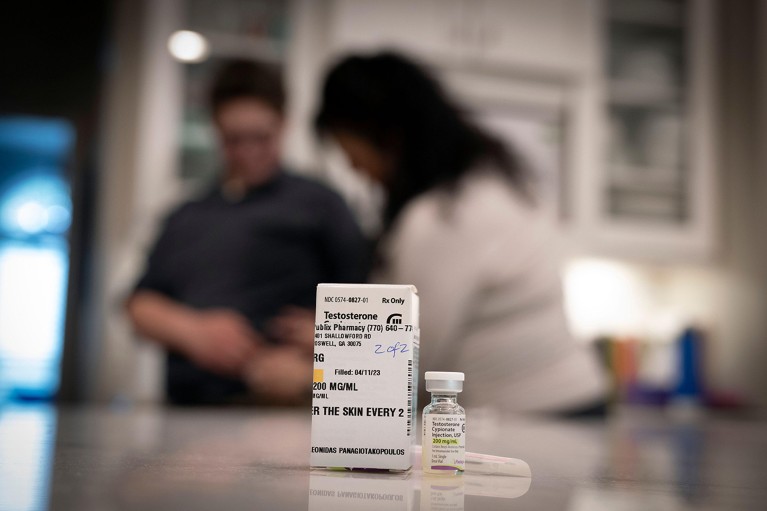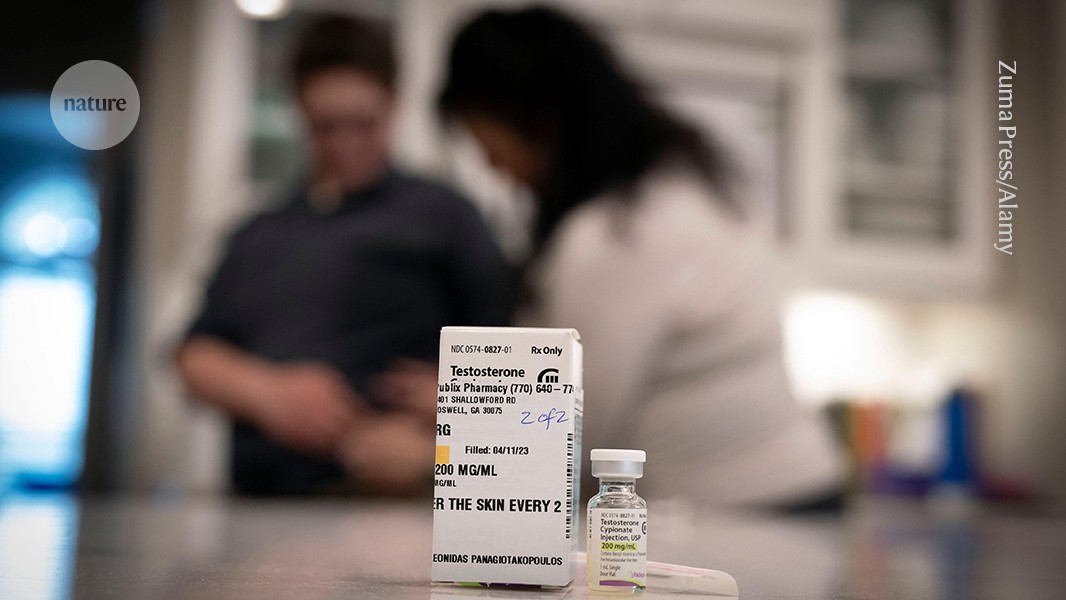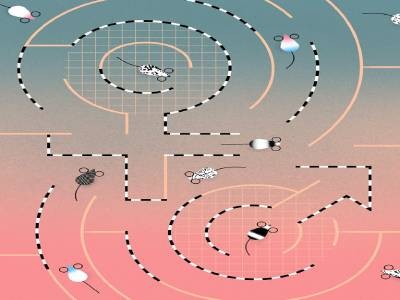
A transgender person receives a testosterone injection as part of their gender-affirming hormone therapy.Credit: Zuma Press/Alamy
When trans men receive testosterone therapy, their bodies begin to resemble those of cis men in many ways — including their immune systems. That’s according to a study published today in Nature1, one of the largest yet to examine how gender-affirming hormone therapy (GAHT) affects the immune system over time.
The results provide much-needed insight and could help to explain why men tend to be more susceptible to viral infections than women and women are often more susceptible to autoimmune conditions.
The study is important because physicians want GAHT “to be safe, of course”, says co-author Mats Holmberg, an endocrinologist at the Karolinska Institute in Stockholm, who provides gender-affirming care. It is a step towards being able to administer the best treatment possible, Holmberg says.
An immune balance point?
During their study, Holmberg and his colleagues collected blood samples from 23 trans men (who were assigned female at birth but sought masculinizing GAHT) at three time points: before they began GAHT, three months into treatment and one year into treatment. Over time, the researchers observed a shift in the participants’ immune response, from a type characterized by high levels of immune-signalling proteins called type I interferons, which specialize in fighting viral infections, to one featuring an abundance of an inflammatory protein called tumour necrosis factor (TNF), which is associated with muscle growth.
What’s new here is that sex hormones seem to cross-regulate immunological pathways, says study co-author Petter Brodin, a paediatric immunologist at the Karolinska Institute. As testosterone levels go up and oestrogen levels go down, it seems as if the immune system passes through a balance point, Brodin adds.
“This is a very interesting new finding that will trigger a lot of research,” says Marcus Altfeld, an immunologist at the University Medical Center Hamburg–Eppendorf in Germany. In particular, Altfeld wants to understand whether rising TNF levels reduce the amount of type I interferons directly, or whether testosterone mediates both of these effects independently.
Disease implications
The researchers point out that their molecular-level findings echo real-world susceptibility to infection and disease. For instance, during the early days of the COVID-19 pandemic, men infected with the coronavirus SARS-CoV-2 had about a 50% higher death rate than did women who were infected. This makes sense, Brodin says, because women typically have high levels of type I interferons, helping them to fight off infections.
Heed lessons from past studies involving transgender people: first, do no harm
On the flip side, women develop long COVID more frequently than do men — about 76% more often, according to one study2. This could be because long COVID bears a resemblance to autoimmune diseases, some of which are associated with overactivation of the type I interferon system.
Other research also points in this direction. A preprint posted ahead of peer review3 in March shows that low levels of testosterone are a predictor of whether women will develop long COVID. “The importance of sex hormones in both acute, severe COVID and long COVID is becoming more appreciated,” says preprint co-author Akiko Iwasaki, an immunologist at Yale University in New Haven, Connecticut.
But hormones are probably not the whole story when it comes to differences in susceptibility to COVID-19 or other diseases, researchers say. The X-chromosome — of which females typically have two copies, and males one — also deserves consideration, says Sabra Klein, an immunologist at Johns Hopkins University in Baltimore, Maryland. The X-chromosome is rich in genes related to the immune system so, for instance, attributing sex differences in COVID-19 outcomes to hormones alone is “probably simplifying something that’s more complex”, she says.
Autoimmune risk
Trans men need not be too concerned that testosterone therapy will raise their risk of viral infections. “Most of the normal infections, they are common in both sexes,” Altfeld says, and people get over them. Autoimmune disorders, by contrast, can be severe, and Holmberg is concerned that oestrogen therapy, which reduces testosterone, might increase the risk of developing these conditions.
The fraught quest to account for sex in biology research
But the study didn’t examine oestrogen therapy or safety directly. Klein thinks it’s too early to say whether the link between autoimmune diseases and GAHT warrants consideration. “These are small sample sizes,” she says — 23 people isn’t a lot. “This is pointing towards the need for more research.”
Some physicians already warn their patients about the link. Altfeld, who studies the effect of GAHT on the immune system, says he works with clinicians who inform trans women that oestrogen therapy comes with a risk of developing an autoimmune disease. The potential downside is “well known in the community”, he says.
But not everyone has such well-informed doctors. It’s “really hard” to find a medical provider who specializes in multiple disciplines, such as immunology and gender-affirming care, and can treat “intersectional needs”, says Jamie, a transmasculine person (assigned female at birth but identifying with masculinity) who has an autoimmune condition called Sjögren’s syndrome, and who asked to be identified by a pseudonym because not everyone in their life is aware of their gender identity.
Jamie decided to undergo testosterone therapy both for gender affirmation and to treat Sjögren’s syndrome — a course of action they undertook on the basis of their own reading of the scientific literature, rather than because of a physician’s advice. Since then, Jamie has traded testosterone therapy for an immunosuppressant called adalimumab (sold as Humira) in an effort to improve their health. Adalimumab inhibits TNF, which is elevated in people with Sjögren’s. Holmberg and Brodin’s work makes Jamie wonder whether returning to testosterone therapy would make the adalimumab they are taking less effective, given that their TNF levels could rise as a result. “My god, I wish there were studies on this so that we knew how the interactions worked instead of just having to guess,” they say.




